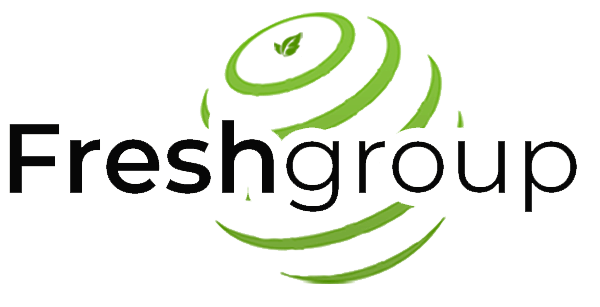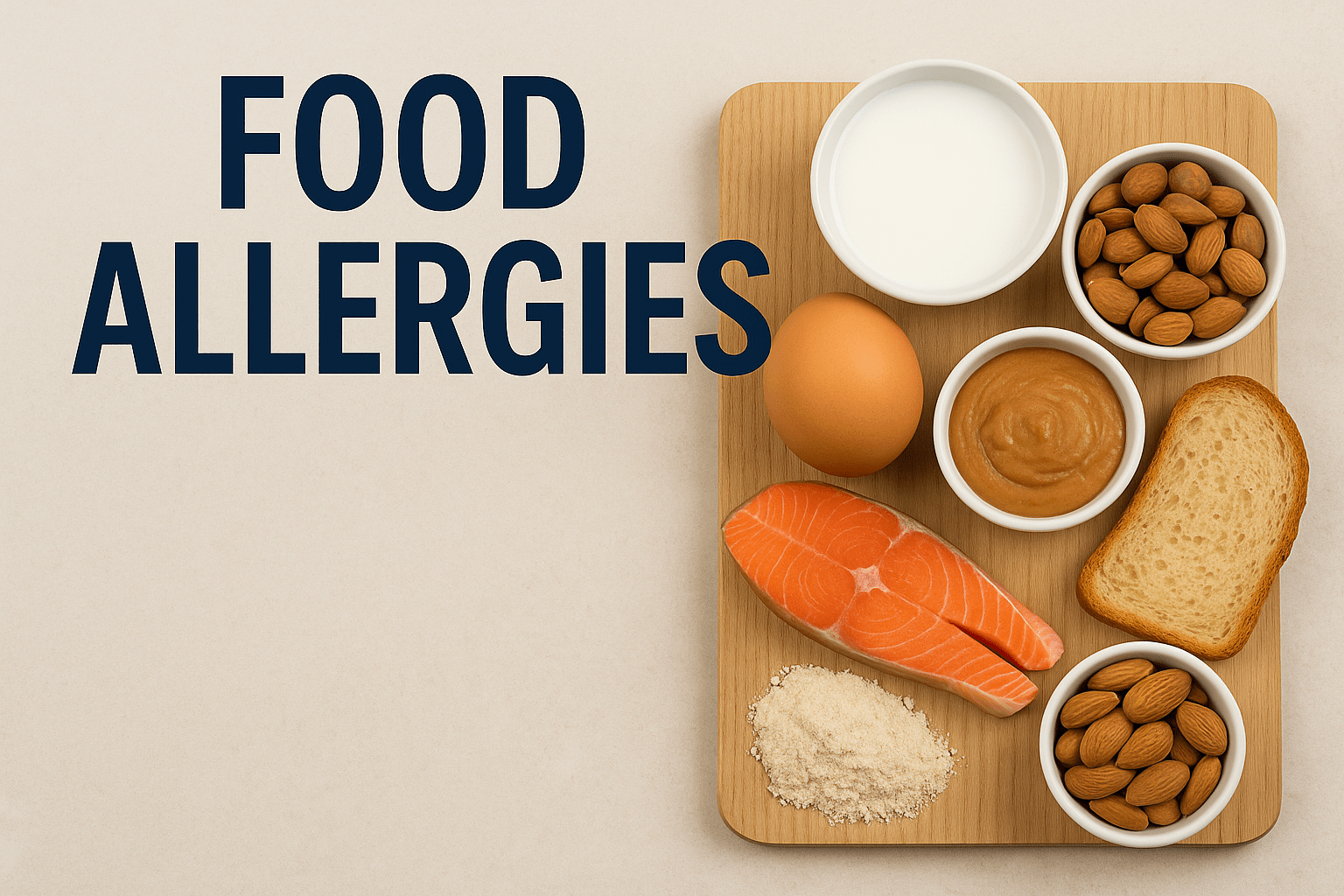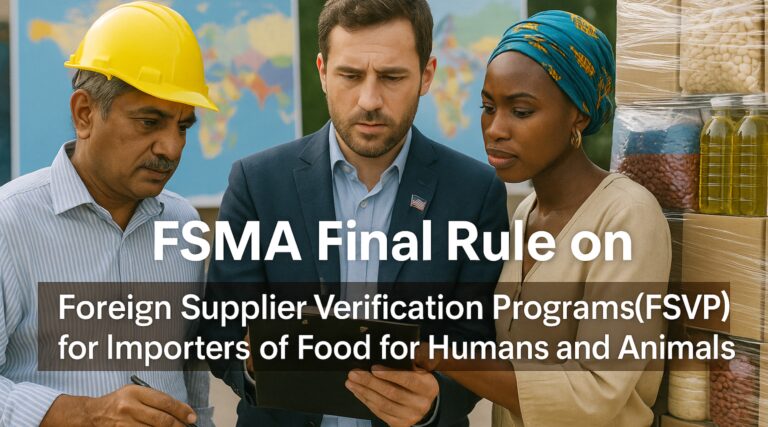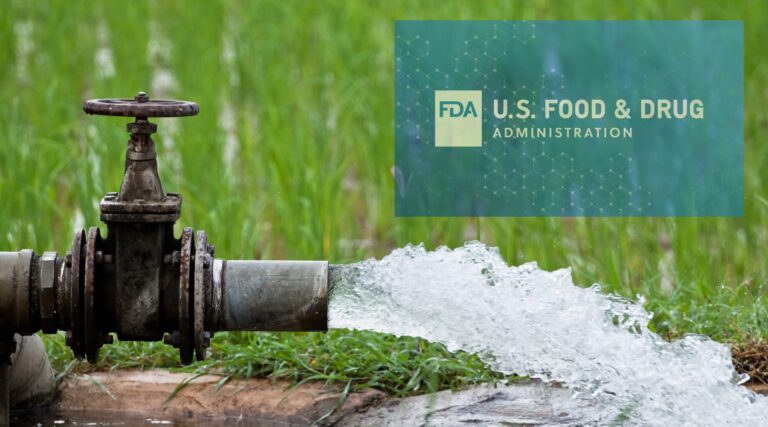Latest FDA Updates on Food Allergens – January 6, 2025
Food allergies—and other hypersensitivity reactions—affect millions of Americans. An allergic reaction occurs when the immune system mistakenly attacks a harmless food protein. Reactions can range from mild (like hives or lip swelling) to life-threatening anaphylaxis, which can cause severe respiratory distress and shock.
There is currently no cure for food allergies. Prevention strategies, early recognition of symptoms, and avoiding allergenic foods are the most effective ways to prevent serious health risks.
How the FDA Protects Consumers
To safeguard consumers with allergies, the FDA:
- Enforces strict labeling laws for allergens in packaged foods and beverages.
- Issues guidance to food businesses on managing allergen risks.
- Inspects facilities for compliance with allergen controls and accurate labeling.
- Monitors the food supply through sampling and investigations.
- Coordinates recalls and public notifications if allergen-related violations are discovered.
The Nine Major Food Allergens
Under the Food Allergen Labeling and Consumer Protection Act of 2004(FALCPA), eight major allergens were first identified: Milk, eggs, fish, Crustacean shellfish, tree nuts, peanuts, wheat, and soybeans.
In 2021, sesame became the ninth major allergen when the FASTER Act was signed into law. All sesame-containing foods must comply with FDA labeling and manufacturing requirements as of January 1, 2023.
Note: Products already on store shelves before this date weren’t required to be relabeled, so consumers may still see some items without sesame listed as an allergen. When in doubt, the FDA advises contacting the manufacturer.
How Allergens Must Be Labeled
The law requires food labels to clearly identify major allergens in one of two ways:
- In parentheses immediately after the ingredient:
Examples: “lecithin (soy),” “flour (wheat),” “whey (milk)” - In a separate “Contains” statement near the ingredient list:
Example: “Contains wheat, milk, and soy.”
For tree nuts, the specific type (e.g., almond, walnut) must be named. The same goes for fish and shellfish (e.g., cod, shrimp).
Advisory Statements: “May Contain…” and Cross-Contact
Labels may include voluntary advisory statements like “may contain [allergen]” or “processed in a facility that also uses [allergen].” These are intended to warn consumers about possible unintentional allergen presence due to cross-contact during production.
FDA policy requires that such warnings:
- Are based on actual risk.
- Are not used in place of good manufacturing practices.
- Are truthful and not misleading.
Beyond the Big Nine: Other Allergens and Sensitivities
More than 160 other foods have been known to trigger allergic or hypersensitive reactions in certain individuals. The FDA monitors substances like:
- Gluten (especially for those with celiac disease)
- Color additives like FD&C Yellow No. 5
- Carmine and cochineal extract (from insects)
- Sulfites, which can cause asthma in sensitive people
When science shows a clear health risk, the FDA may require special labeling even if the ingredient isn’t one of the nine major allergens.
Gluten-Free Labeling
For people with celiac disease, gluten (a protein found in wheat, barley, and rye) can trigger serious health issues. To protect these individuals, the FDA:
- Defined the term “gluten-free” in food labeling regulations (2013).
- Set compliance standards for fermented and hydrolyzed foods (2020).
- Conducts routine inspections and outreach to ensure industry compliance.
FDA Oversight and Enforcement
Regulations & Inspections
Under the Current Good Manufacturing Practice and Preventive Controls (CGMP & PC) rule, food facilities must:
- Prevent allergen cross-contact.
- Ensure correct labeling of allergens.
- Maintain written procedures and undergo inspections to verify compliance.
Monitoring Allergic Reactions
The FDA tracks consumer complaints and adverse events through its Consumer Complaint System and the Reportable Food Registry (RFR). From 2009 to 2014, about one-third of RFR-reported food safety risks were due to undeclared allergens—milk being the most common.
Products often involved in recalls include:
- Bakery items
- Snack foods
- Candy (especially dark chocolate)
- Dairy products
- Sauces and dressings
Allergen Testing
The FDA uses ELISA (Enzyme-Linked Immunosorbent Assay), PCR (Polymerase Chain Reaction), and mass spectrometry to detect allergens in foods. It also developed the xMAP (Multi-Analyte Profiling) food allergen assay, capable of simultaneously detecting 16 allergens, including sesame.
Recent surveys have specifically looked at:
- Milk in dark chocolate labeled “dairy free” (2013–2014, 2018–2019, and 2022–2023)
- Compliance with gluten-free labeling (2015–2016)
Regulatory Action
The FDA may take enforcement actions such as:
- Issuing recalls or warning letters
- Seizing mislabeled or adulterated products
- Refusing entry of noncompliant imports
Consumers can find up-to-date recall alerts on the FDA website.
What to Do in Case of an Allergic Reaction
Symptoms usually appear within minutes to a few hours of consuming an allergen. These may include:
- Hives or flushed skin
- Itching or swelling of the mouth, face, or lips
- Nausea, vomiting, or diarrhea
- Coughing, wheezing, or difficulty breathing
- Dizziness or fainting
- Anaphylaxis (a medical emergency)
If symptoms occur:
- Stop eating the food immediately.
- Use emergency medication (e.g., epinephrine) if prescribed.
- Seek medical attention without delay.
Some symptoms may mimic other conditions, so a proper medical evaluation is essential to confirm a food allergy.
Source: United States Food and Drug Administration (FDA)
Reach out to Fresh Group Food Safety And Quality Consulting for any inquiries related to food quality and safety.




